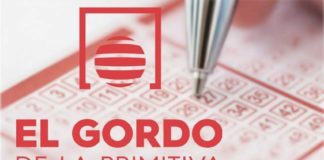- Spanish Lottery Results William Hill
- Spanish Lottery Results Primitiva
- Spanish Lottery Results Checker Once
- Spanish El Gordo de Navidad
El Gordo de Navidad is one of the largest and richest lotteries in the world with a prize pool in excess of €2 billion. The lottery, officially known as Sorteo Extraordinario de Navidad or Loteria de Navidad, began in 1812 and has become an annual Spanish tradition.
- All the most recent Spanish Daily results are always made available on this page shortly after each draw. Find out if you've won up to R90 million today!
- Bet on Irish lottery online, 49s, and much more with Betfred Lotto. We’re serving up specials, scratch cards, and other promotions on lottery draws across the world. Bet on the outcomes and find out if you’re a winner.
Latest Result
Spanish El Gordo de Navidad El Gordo de Navidad is one of the largest and richest lotteries in the world with a prize pool in excess of €2 billion. The lottery, officially known as Sorteo Extraordinario de Navidad or Loteria de Navidad, began in 1812 and has become an annual Spanish tradition.
This shows the latest 2020 result for El Gordo de Navidad


Spanish Lottery Results William Hill
The draw process involves one ball being selected from each machine simultaneously and continues until the prize bombo is empty. The process takes hours to complete and has become a significant cultural event in Spain's annual calendar. To add to the atmosphere and excitement, children from the San Ildefonso School in Madrid select the balls and sing the results.
Buy Tickets
The draws, which are held in Madrid on 22nd December every year and considered a national event, differ from standard lotteries in two important aspects. Unlike other lotteries, whose draws are generally brief and completed with relatively little fanfare, El Gordo de Navidad draws take hours to complete due to the sheer number of prizes and the format is closer to a raffle than a standard lottery.
The balls are drawn from two machines, called 'bombos', which each hold thousands of balls. One bombo contains balls inscribed with a pre-determined number combination, while the other bombo contains balls inscribed with a prize value. Each pre-determined number is printed on numerous tickets so, when a prize is selected to correspond with the number drawn, the prize fund for that tier will be shared between all of the players whose ticket matches the number drawn.
How to Play
Tickets for El Gordo de Navidad are unlike those in other world lotteries. Instead of buying a single ticket, Navidad tickets are sold as either a full ticket, known as a 'billete', or a tenth of a ticket known as a 'decimo'. Rather like a raffle, players buy pre-printed billetes, and each number can be sold as many as 180 times in what is known as a 'series', meaning there will be multiple billetes displaying the same number.
Prize Breakdown
The prize tiers below are per billete:
| Prize Tier | Prizes Available* | Prize per Billete† |
|---|---|---|
| First Prize 'El Gordo' | 1 | €4,000,000 |
| Second Prize | 1 | €1,250,000 |
| Third Prize | 1 | €500,000 |
| Fourth Prize | 2 | €200,000 |
| Fifth Prize | 8 | €60,000 |
*The number of prizes is calculated by multiplying the winning combinations drawn by the number of billetes in the series. For example, there would be 180 x €4,000,000 'El Gordo' prizes if the number of billetes in the series was 180.
†As the prize amount is per billete, the prize value is divided by the number of players participating on a billette. For example, if 10 players each had a 'decimo', they would receive 1/10 of the billet prize amount.
The table above shows the top 5 prize tiers but the 'pedrea', or 'shower of prizes', includes hundreds of further prizes drawn throughout the day.

El Gordo de Navidad draws frequently include a 'variation' which gives players additional prizes for matching the variation chosen. For example, the variation for the 2012 draw entitled the holder of any ticket number ending in 8 to claim a prize.
Spanish Lottery Results Primitiva
Other El Gordo Draws
Spanish Lottery Results Checker Once
In addition to El Gordo de Navidad, there are two further special draws which take place every year - Sorteo del Nino which is held on 6th January and the San Ildefonso draw which is held on 5th July. El Gordo de la Primitiva is a regular draw which takes place every Thursday and Saturday and offers a starting jackpot of €4 million.